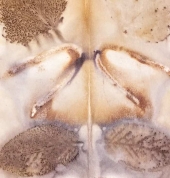May Lotito wrote:I made some lake pigments from both dried or fresh plant materials. Too bad I used up the pokeberries last year. The hot pink color is from madder. Black from false indigo and seafoam/light green/slate blue are from anthocyanins.
I was very interested in trying this a few years ago.
I did some reading and thought about trying just madder but as with many of my projects it got pushed to the side.
I am so glad to see your results...beautiful!
Do you have a thread here explaining/documenting your processes?
"We're all just walking each other home." -Ram Dass
"Be a lamp, or a lifeboat, or a ladder."-Rumi
"It's all one song!" -Neil Young









